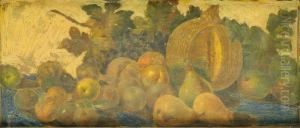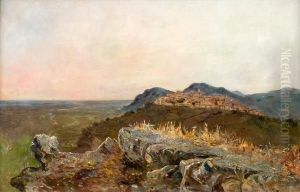Filippo Mola Paintings
Filippo Mola, also known as Pier Francesco Mola or Il Ticinese, was an Italian painter of the High Baroque period, noted for his distinctive style that blended a Northern European sensibility with Roman pictorial traditions. Born in Coldrerio (now in Switzerland) in 1609, Mola moved to Rome at a young age, where he became deeply embedded in the artistic culture of the city.
Mola's early experiences were shaped by the work of Bolognese painters, which was evident in his initial pieces. His formative years included a brief stay in Venice, but it was in Rome where his career truly began to flourish. He found a mentor in Cavalier d'Arpino, who was the head of the Accademia di San Luca at the time. Under d'Arpino's guidance, Mola began to develop a softer style, moving away from the Bolognese influence to embrace a more classical approach.
The artist's mature period was marked by a mix of influences, including the dynamic compositions of the Roman Baroque and the naturalism of the Dutch and Flemish painters active in Rome during the 17th century. Mola's landscapes, often populated with small, lively figures and suffused with a poetic atmosphere, are considered particularly significant. These works show a mastery of chiaroscuro and a delicate handling of light, which would influence later artists.
Mola became an esteemed member of the Roman artistic community, eventually taking over as the head of the Accademia di San Luca. His religious and mythological scenes were also well received, and he was commissioned by many important patrons, including the Pamphilj family. Despite his success, Mola sometimes found himself in conflict with the prevailing tastes of the Roman art world, which were dominated by the grandiose style of Gian Lorenzo Bernini and Pietro da Cortona.
Filippo Mola passed away in Rome in 1666. His legacy includes not only his own body of work but also his influence on subsequent generations of artists. His unique blend of northern and Italian elements helped pave the way for the development of landscape painting in Italy and beyond.

